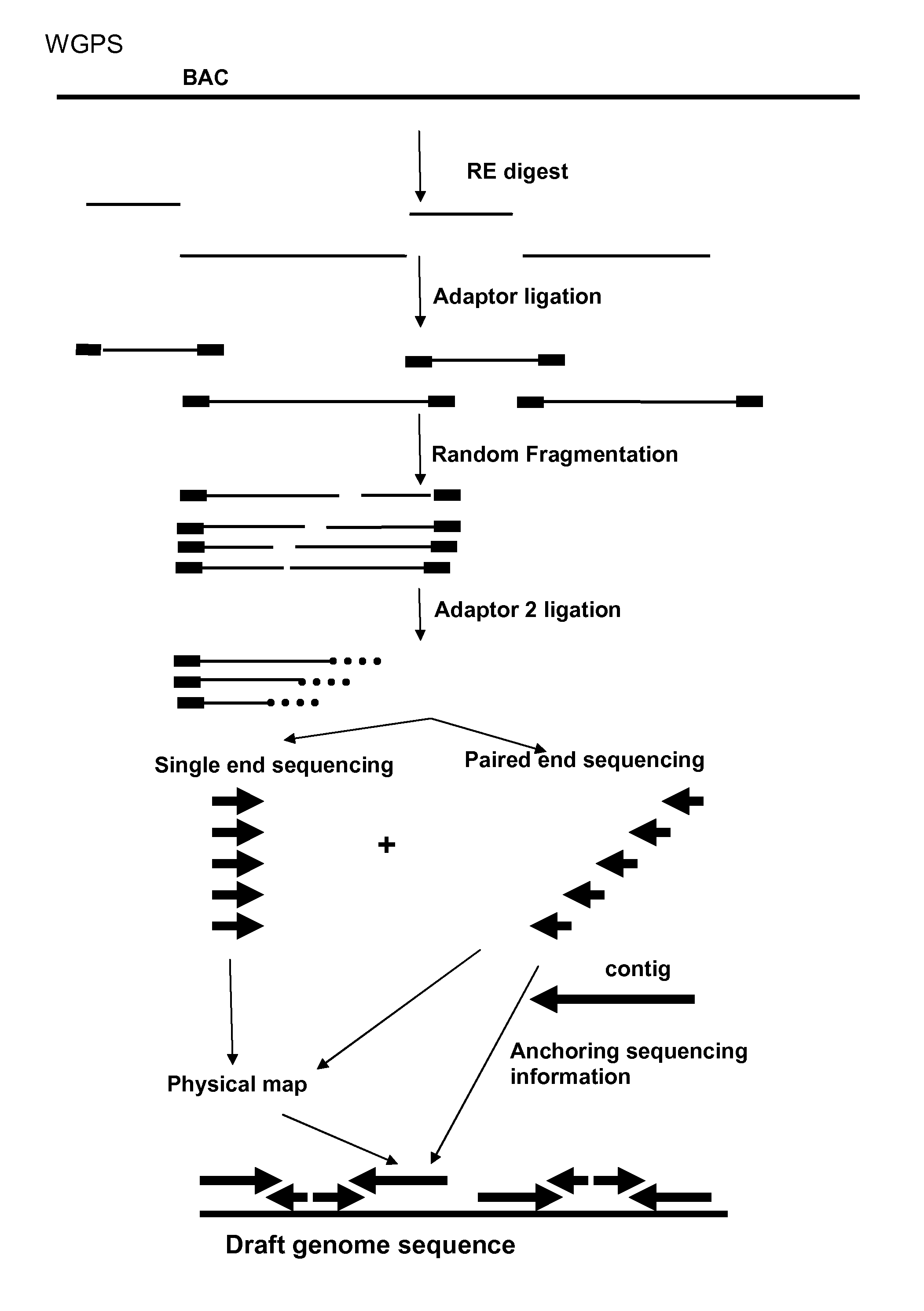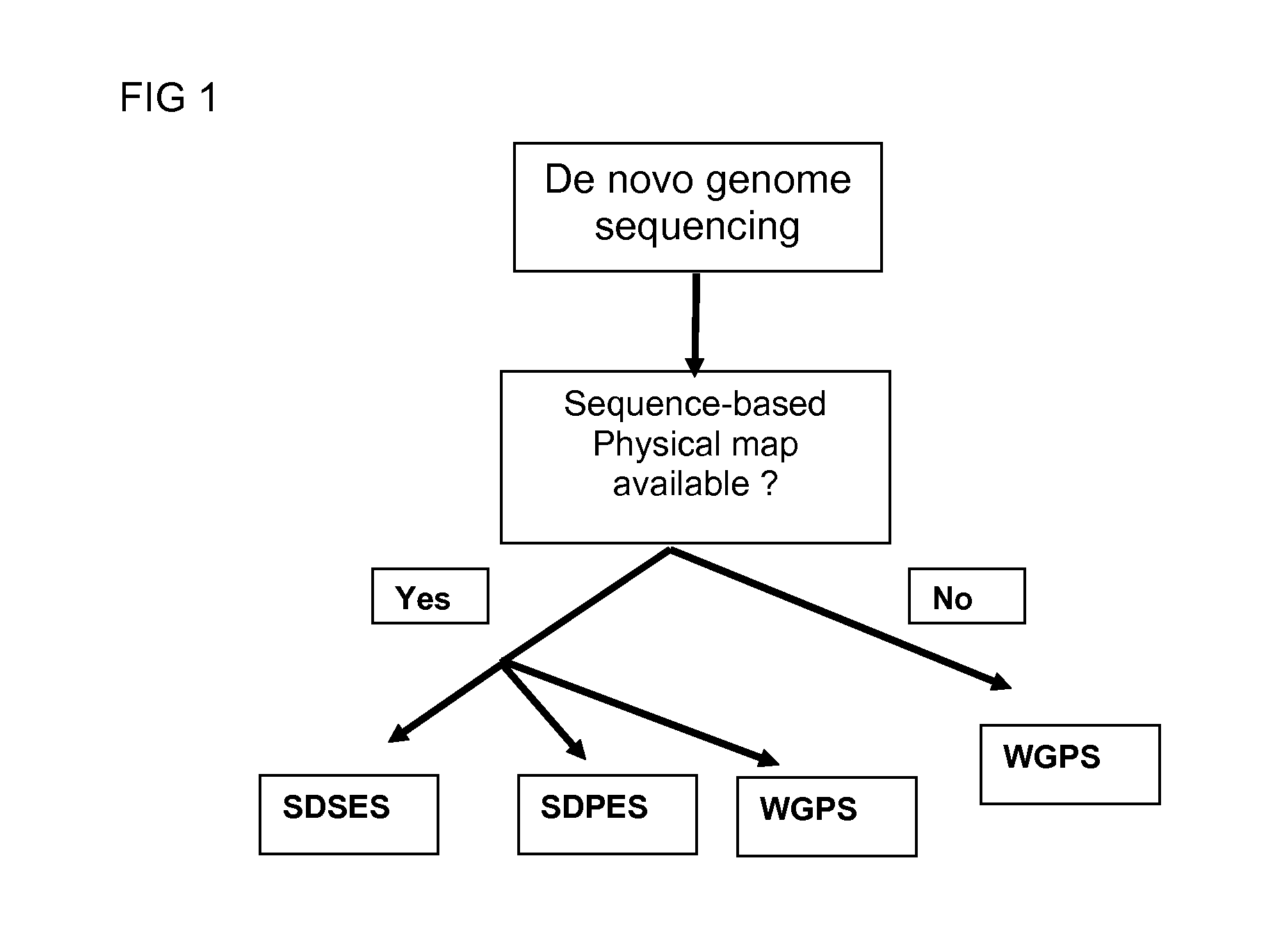Restriction enzyme based whole genome sequencing
a restriction enzyme and whole genome technology, applied in the field of large-scale nucleic acid sequencing, can solve the problems of not being economically feasible to sequence and assemble an entire genome in a straight forward fashion, and still not being able to achieve the goal, so as to achieve the effect of maximizing the possibility
- Summary
- Abstract
- Description
- Claims
- Application Information
AI Technical Summary
Benefits of technology
Problems solved by technology
Method used
Image
Examples
examples
WGPS Example
[0192]A Melon BAC library superpool 24 was provided together with WGP data of superpool 24 to demonstrate successful WGPS on BAC pools through assembly of GA paired end reads linked to enzyme sites.
[0193]1. Wetlab Approach
[0194]The approach contains the following steps:[0195]Digestion of the (individual) BAC pool DNAs using a single enzyme (EcoRI).[0196]Ligation of pool specific EcoRI compatible adaptors which contain the P5 amplification, sequence primer 1 and a pool specific identifier sequence.[0197](Optional pooling of the RL products from super pools which will be sequenced in a single lane of e.g. the Illumine Genome Analyzer. This up to the maximum of different pool specific identifiers used in the previous ligation step)[0198]Fragmentation of the adaptor ligated products into products with a size range of 1000 bp.[0199]Fragmented adaptor ligated restriction fragments are end polished and a single A-nt is added to the fragmented ends.[0200]To remove fragments that...
PUM
| Property | Measurement | Unit |
|---|---|---|
| physical | aaaaa | aaaaa |
| affinity | aaaaa | aaaaa |
| nucleic acid sequencing | aaaaa | aaaaa |
Abstract
Description
Claims
Application Information
 Login to View More
Login to View More - R&D
- Intellectual Property
- Life Sciences
- Materials
- Tech Scout
- Unparalleled Data Quality
- Higher Quality Content
- 60% Fewer Hallucinations
Browse by: Latest US Patents, China's latest patents, Technical Efficacy Thesaurus, Application Domain, Technology Topic, Popular Technical Reports.
© 2025 PatSnap. All rights reserved.Legal|Privacy policy|Modern Slavery Act Transparency Statement|Sitemap|About US| Contact US: help@patsnap.com



